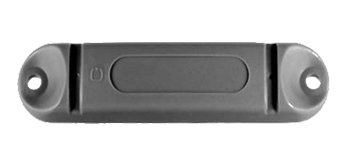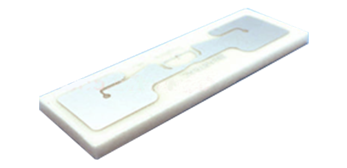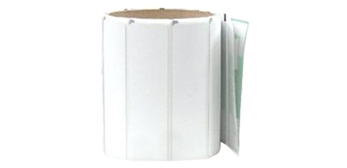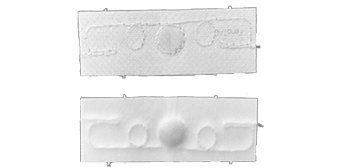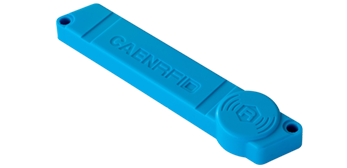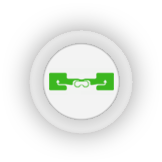
What are RFID tags and what are they used for?
RFID tags are a fundamental component of any internal traceability system. They use radio frequency to transmit the information contained in them to a reader to identify an asset.
In this article we will address one of the basic and fundamental components of any RFID system. The RFID tags, globally known as RFID tags.
WHAT ARE THE MAIN DIFFERENCES BETWEEN RFID TAGS AND INLAYS?
One of the most important factors to take into account when buying RFID tags and inlays are the characteristics and specifications of them. Currently there are countless options on the market for our system, and selecting the best fit will be crucial for a perfect functioning. to do this, we need to know the main options and features that are within our reach.
Frequency range of inlays
The frequency range can be compared to the tuning of our radio. In the same way that in order to listen to our favorite radio stations we must first tune to a signal (radio station), RFID tags and readers must also be tuned to the same frequency in order to communicate with each other.
There are different set frequencies that an RFID system can use. Generally, the most common and most used frequencies are:
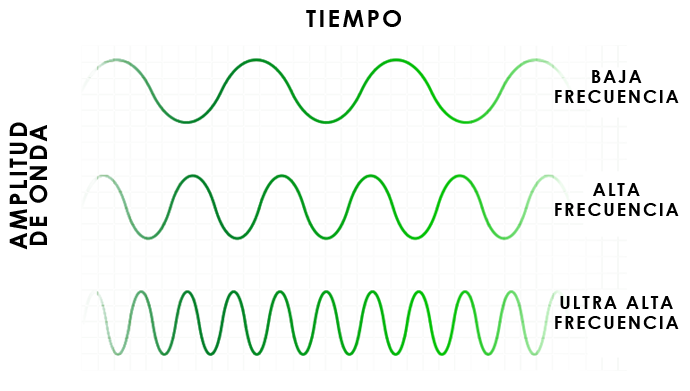
Low frequency
(LF)
- Frequencies from 30 KHz to 300 KHz.
- Short reading range, approximately 10 cm.
- Slower reading speed.
- Low sensitivity to interference from radio waves.
- Low sensitivity to interference from radio waves.
- The applications for this frequency is usually used for access control and traceability of animals (livestock).
High frequency
(HF)
- Frequencies from 3 to 30 MHz.
- Known to host the frequency 13.56 MHz, commonly known to be the frequency used by the NFC.
- Reading range between 10 cm and 1 meter.
- Moderate sensitivity to radio wave interference.
- This frequency is usually applied for tickets, payment cards and data transfer applications.
- There are several HF standards.
Ultra High frequency
(UHF)
- Frequencies from 300 MHz to 3 GHz.
- Reading range up to 12 meters.
- Complies with the globally adopted standard UHF Gen2 (EPCglobal Gen2 ISO 18000-63).
- Is the frequency with the cheapest labels to manufacture.
- Applications for this frequency are often focused on retail, healthcare, health sciences, pharmaceutical industry, transportation and manufacturing.
active, passive or semi-passive RFID Tags
RFID tags can be distinguished according to whether they have a power supply or not. In other words, active, passive or semi-passive tags.
Active RFID tags
- They operate on batteries and actively transmit a constant signal.
- They have the widest reading range of any RFID tag. Some manufacturers claim to produce active tags that reach 100 meters reading distance.
- They are the most expensive due to the cost of the battery and the transmitter.
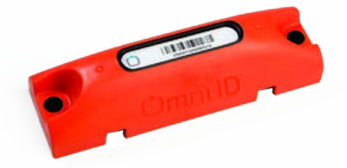
Passive RFID tags
- They don’t have a power supply on the label.
- The power to activate the chip comes only from the external wave created by the antenna and the RFID reader in the immediate vicinity.
- The reading range is limited by the transmitted power density necessary to achieve sufficient voltage for the chip to activate.
- They are significantly less expensive than active tags.
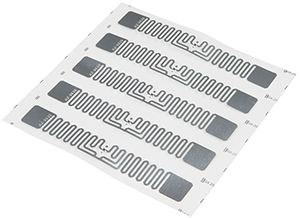
Semi-passive RFID tags
- They include a battery so that the chip always has enough power to turn on, but they don’t have an active transmitter.
- They have a wider range than passive tags, though at a higher cost and limited life due to the battery.
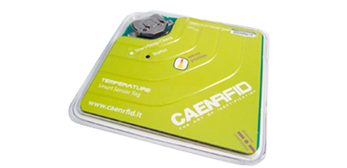
We are happy to give you a quotation so you can compare our prices with those of other companies.
Dimensions, flexibility and durability of RFID tags
Sometimes one of the most important limiting factors when choosing our RFID tags is the environment in which we will use our system.
Some of these tags are designed for very specific applications. Here are some representative examples commonly used in the sector.
sensor RFID tags & Inlays
These sensor tags measure critical parameters and transmit the necessary data about the assets and their environment when a reader activates the tag.
The three most common measurements between these tags are usually: Temperature, humidity and pressure. The applications in which these labels are usually used are:
- Cold chains and perishable items
- temperature monitoring
- exposure to humidity or moisture penetration
- predictive maintenance of assets
PREVIOUS ARTICLES

Most companies do not indicate prices because the price is based on many variables. In this article we will talk about the costs of RFID and try to clarify how much we can spend on our RFID system.

RFID tags are a fundamental component of any internal traceability system. They use radio frequency to transmit the information contained in them to a reader to identify an asset.

Radio frequency identification is a technology that allows us to identify almost any object wirelessly using data transmitted through radio waves. It knows the components that make up an RFID system.
